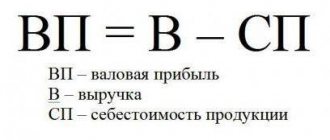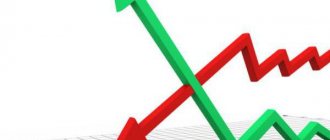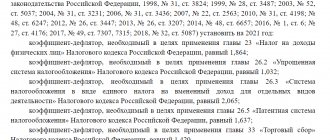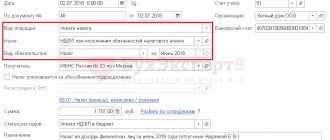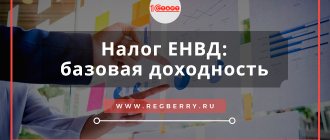A high degree of liquidity of the enterprise’s balance sheet characterizes the developed financial intelligence of the company’s management and indicates its ability to cover existing debts to creditors with cash receipts.
Analysis of balance sheet liquidity allows us to bring to the surface information about the solvency of the enterprise and the degree of its economic stability at the current moment.
The higher the numerical assessment of balance sheet liquidity, the less time it will take to repay the company’s existing monetary obligations. Critically low balance sheet liquidity is a sure harbinger of the imminent bankruptcy of the enterprise.
Analysis of balance sheet liquidity and solvency of an enterprise implies a cluster distribution of its assets and liabilities.
The division of assets into clusters is based on the speed of their transformation into cash, and liabilities - the speed of their repayment.
The higher the liquidity ratio of an asset or liability, the less time it will take for it to be converted into cash.
Money itself is not ranked, since it is considered the most liquid commodity currently existing.
What is the PA index
This is a coefficient that shows what part of non-current assets, including fixed assets, is financed by the enterprise’s own capital.
Exceeding the KPA indicates an unstable financial position of the company, since:
- in the absence of long-term borrowed funds, this situation suggests that PAs are formed not only from their own, but also from external short-term sources, and withdrawing money from circulation for such purposes can lead to the inability to pay off short-term obligations;
- if there are long-term borrowed funds on the balance sheet, a CPA of more than 1 also signals possible financial problems in the event of money being withdrawn from circulation with the obligation to return it to creditors.
Analysis of liquidity of the enterprise balance sheet
To derive the overall liquidity indicator of an enterprise’s balance sheet, it is recommended to compare several assets and liabilities.
Their size, expressed in rubles or other monetary units, is compared.
Below is an assessment of solvency, which is derived through liquidity analysis.
The fulfillment of certain inequalities gives the most accurate judgments about the organization:
- If A1 is greater than P1, the enterprise has the ability to repay the most urgent obligations with the help of assets that have almost absolute liquidity;
- If A2 is greater than P2, the organization has the opportunity to pay off creditors with assets with a rapid rate of sale;
- If A3 is greater than P3, the enterprise is able to repay long-term loans using slow-moving assets;
- If A4 is less than or equal to P2, then the other inequalities described above are met. The company has the maximum degree of solvency and can pay off all existing obligations with appropriate funds.
Ensuring the fulfillment of the first three inequalities (and the fourth automatically) indicates the solvency of the enterprise and the liquidity of its balance sheet.
Failure to comply with the fourth condition indicates the illiquidity of the balance sheet and the presence of problems with the solvency of the enterprise.
How to calculate
The permanent asset ratio is equal to the ratio of non-current assets to equity:
KPA = BOA/SC.
Permanent asset index (balance sheet formula) = line 1100 / line 1300.
The value of the indicator, of course, depends on the company’s field of activity. Thus, in capital-intensive industries its value will be higher than in enterprises, the availability of fixed assets in whose activities is not a decisive factor. For example, for trading enterprises, working capital will prevail in the balance sheet structure.
The generally accepted standard value of KPA is in the range from 0 to 1.
KPA is directly related to the agility coefficient, which, on the contrary, shows what part of the working capital is financed by the organization’s own capital.
The sum of these two indicators must equal one.
What is a permanent asset
A permanent asset (PA) refers to the organization's obligations to counterparties, constantly reflected in the balance sheet (Order of the Ministry of Finance No. 66n dated July 2, 2010).
These constants are always present in the final financial statements and move from each previous balance sheet to the next. They are long-term and are reflected in the first section of the balance sheet. Permanent assets are identical to non-current assets. Thus, permanent funds consist of the following types:
- intangible - line 1110 BB;
- research and development results - 1120;
- intangible search - 1130;
- material search - 1140;
- fixed assets - 1150;
- profitable investments in materiel - 1160;
- financial investments - 1170;
- deferred taxes - 1180;
- other non-current - 1190.
The institution's own capital, consisting of authorized, additional and reserve capital, etc., is displayed in the balance sheet in line 1300 (section III).
Balance sheet liability: definition and rules for filling
Liability is a set of systematized final indicators about the sources of profit creation. In the report they are divided into groups with further detail. The criterion for dividing into categories is the origin of capital. The content of balance sheet items is regulated by PBU 4/99. The liabilities of the balance sheet are grouped:
- Capital.
- Liabilities of an enterprise of a long-term nature.
- Liabilities that must be repaid in the short term.
Liabilities consist of sections that are formed by groups of balance sheet items. Balance sheet items are represented by report lines intended for individual indicators. They are needed to reflect the values at the reporting dates of the enterprise’s property, its sources of origin and the company’s outstanding obligations.
Structure and types
The resources of enterprises are structured by form, speed of turnover, use in activities, sources of funds, ownership, and sales opportunities. There are different approaches to classifying assets, which allow us to understand their significance for the organization from different points of view.
In accounting
There are non-current and current assets, which is how they are divided in accounting. They differ in terms of use (negotiable ones are used for a year, non-current ones - more than 12 months).
Non-current assets are divided into intangible (not having physical expression) and tangible (for example, fixed assets). Current assets are highly liquid resources: they include cash, inventories, short-term investments, etc. The item-by-item structure of resources is reflected in the balance sheet assets.
From an economic point of view
Resources of enterprises and companies can also be classified into pure, financial, illiquid/liquid, short-term/long-term, non-productive, information.
Net are the total assets owned by the organization and belonging only to it. Their value is determined as the sum of all resources available to the enterprise minus borrowed funds:
Net assets = Assets on balance sheet - Borrowed capital
Assets can be divided by liquidity - the speed at which they are converted into money:
- absolutely liquid – funds in national and foreign currencies, cash and in current accounts;
- highly liquid – those that can be converted into money within a period of no more than 30 days, without practically losing their value on the market (short-term investments and debts of debtors);
- medium-liquid - converted into money within a month to six months (not short-term and not hopeless receivables, products in warehouse);
- weakly liquid and illiquid – have a long sales period; This subgroup includes fixed assets, dismantled equipment, and bad receivables.
According to the turnover rate in economic activity, assets are divided into:
- Short-term - these are funds necessary for the ongoing operation of the organization. They can be monetary and ensure the operation of the enterprise (for example, unfinished production, shipped products or goods), and have a quick turnover.
- Long-term are the resources of an enterprise that are listed on the organization’s balance sheet for a long time. Their main characteristic is that the cost of these funds changes as they are used and determines the price of the products and profitability. Their composition is shown in the following figure.
According to the degree of participation in production, assets are divided into production and non-production. Production ones are directly used in the creation of finished products (equipment, materials, etc.). Non-production assets are listed on the balance sheet, but are not involved in the production of goods (for example, office buildings).
Financial assets are often included in a separate group of assets. They include cash and money in bank accounts, securities, shares of other enterprises, accounts, obligations of other organizations to pay for products received, and other financial instruments.
Information assets are intended to organize the production process. They also bring profit to the company. These include intellectual property rights, inventions, patents, documented knowledge, industrial experience, trademarks, trademarks, and computer programs.
In international financial reporting
The criteria for reflecting assets in international practice are somewhat different from Russian ones. The key point is how the asset is recognized. In Russian practice, assets are what belongs to an organization by right of ownership. At the same time, not all resources that generate profit must necessarily be owned by the company. For example, if she leases equipment or a building, then such property is not shown as an asset on the balance sheet. In the international practice of preparing financial statements, the principle of qualitative assessment of an object applies: whether it is under the control of the organization, how it is used and how it affects its solvency.
In this regard, there are a number of specific concepts that are rarely used in Russian practice:
- Monetary assets are those funds and rights to obligations that have a certain value that does not change as prices change. This is directly cash in hand and amounts in the current account, some bonds, accounts receivable.
- Non-monetary resources are objects and rights, the real value of which is revalued over time and with changes in prices: fixed assets, inventories, finished products in warehouses, obligations expressed in the supply of products in kind.
- Long-term assets held for sale. In international accounting, a separate group is allocated to those resources that will not be used in commercial activities, but acquired for subsequent sale.
Slow-selling assets (A3)
Calculation of slow-selling assets (A3) according to Russian financial statements
Inventories + VAT on purchased assets + Long-term financial investments = Page. 1210 Form 1 + Page 1220 Form 1 + Page 1170 Form 1
Calculation of slow-selling assets (A3) according to the financial statements of Kazakhstan
Inventories + Held-to-maturity financial assets + Current income tax + Assets (or disposal groups) held for sale + Available-for-sale financial assets + Derivatives + Financial assets at fair value through profit or loss + Financial assets held to maturity + Other long-term financial assets + Long-term trade and other receivables = Page 018 Form 1 + Page 014 Form 1 + Page 017 Form 1 + Page 101 Form 1 + Page 110 Form 1 + Page 111 Form 1 + Page 112 Form 1 + Page 113 Form 1 + Page 114 Form 1 + Page 115 Form 1
Reasons for the insolvency of an organization in the financial aspect
In today's turbulent world, not all companies can stay afloat. Financial insolvency of organizations occurs for two groups of reasons:
- External aspects. These include all factors that externally influence the position of the company. There are such reasons:
– economic. Declining production rates, bankruptcy stage, economic crisis
– political. Flaws in legislation and instability in the political situation can cause companies to go bankrupt
– degree of development of science and technology. The use of old technologies, reluctance to invest in the development of science, lack of modernization leads enterprises to decline
- Internal factors. These are all the reasons that are created in the company and that can be influenced by the organization’s specialists:
– lack of own working capital
– increase in debt, both receivables and payables
– imperfection of the pricing system in the organization
– poor quality contract work
Factors can influence the position of an enterprise in aggregate or individually, in any case their influence is negative.
Balance sheet liability structure
Each of the three sections of liabilities reflects the sources of formation of the organization’s assets and shows what basis the enterprise has for extracting material benefits. Section 1 shows the institution’s own resources, represented by capital and created reserves. These resources are divided into permanent and temporary categories. The permanent part includes the authorized capital, which is formed when the organization is opened. Variable indicators of the company's own resource base are formed through created reserves and revaluation.
The remaining sections of the balance sheet liabilities are reserved for recording obligations to counterparties. Section 2 is devoted to the organization’s debt, which remained outstanding at the reporting date, and the final settlement date for the formed loans should occur no earlier than 12 months later. Section 3 includes short-term liabilities, which are characterized by a high intensity of change in the overall debt indicator of the enterprise. These debts must be repaid by the company in full within the next 12 months.
The balance sheet liabilities reflect detailed values of indicators for each section thanks to the report items. The level of detail depends on the form of the balance sheet:
- in the full form of the report (Appendix 1 of Order No. 66n), item-by-item transcripts provide a detailed understanding of each indicator;
- in the abbreviated version of the balance sheet (Appendix 5 of Order No. 66n), items are combined into subgroups and show aggregated indicators, this is necessary to simplify the procedure for drawing up a report by persons using the simplified tax system.
Quickly realizable assets (A2)
Calculation of quickly realizable assets (A2) according to Russian financial statements
Accounts receivable + Other assets = Page 1230 Form 1 + Page 1260 Form 1
Calculation of quickly realizable assets (A2) according to the financial statements of Kazakhstan
Current trade and other receivables + Derivative financial instruments + Financial assets at fair value through profit or loss + Other current financial assets + Other current assets = Page 016 Form 1 + Page 012 Form 1 + Page 013 Form 1 + Page 015 Form 1 + Page 019 Form 1

